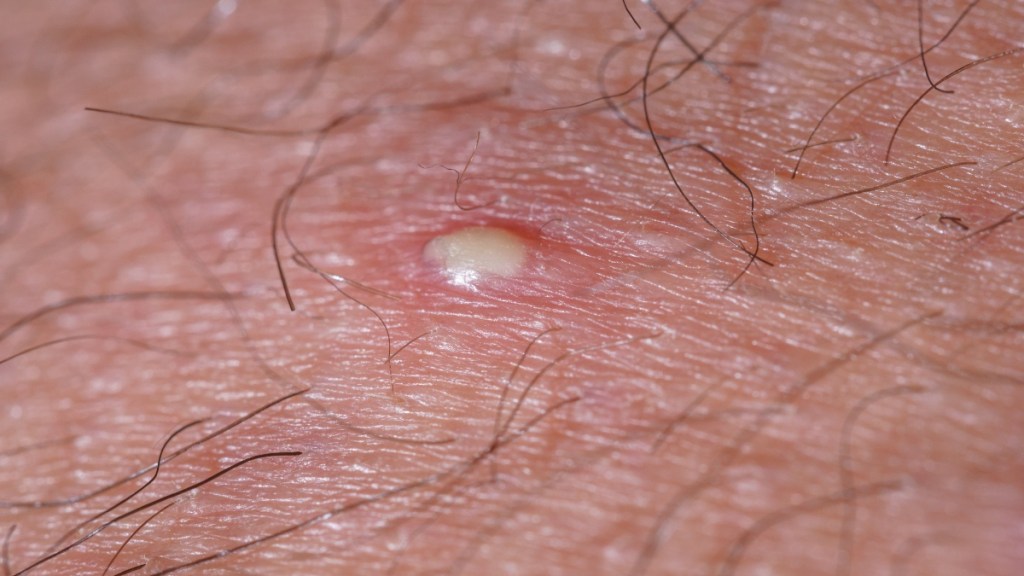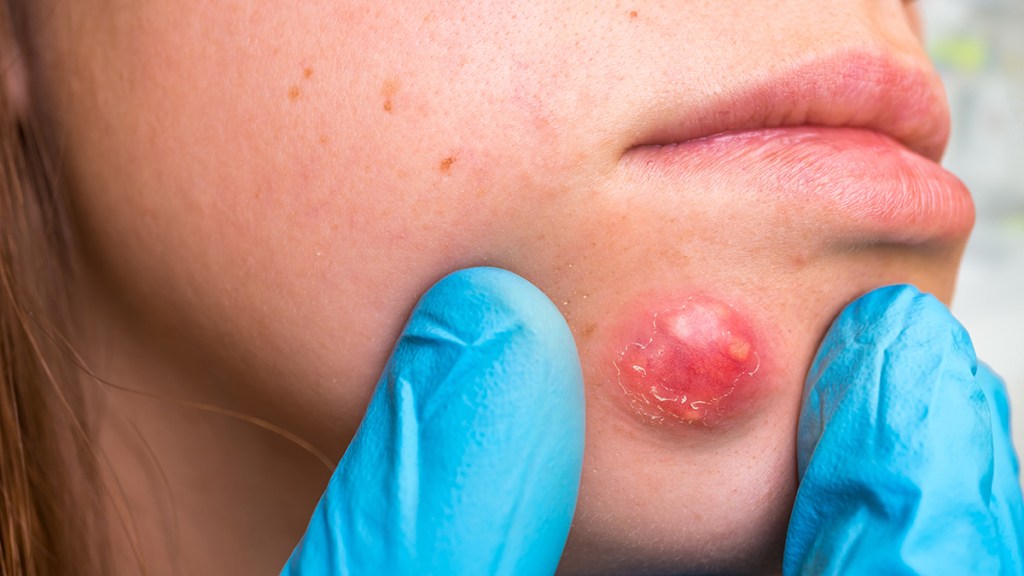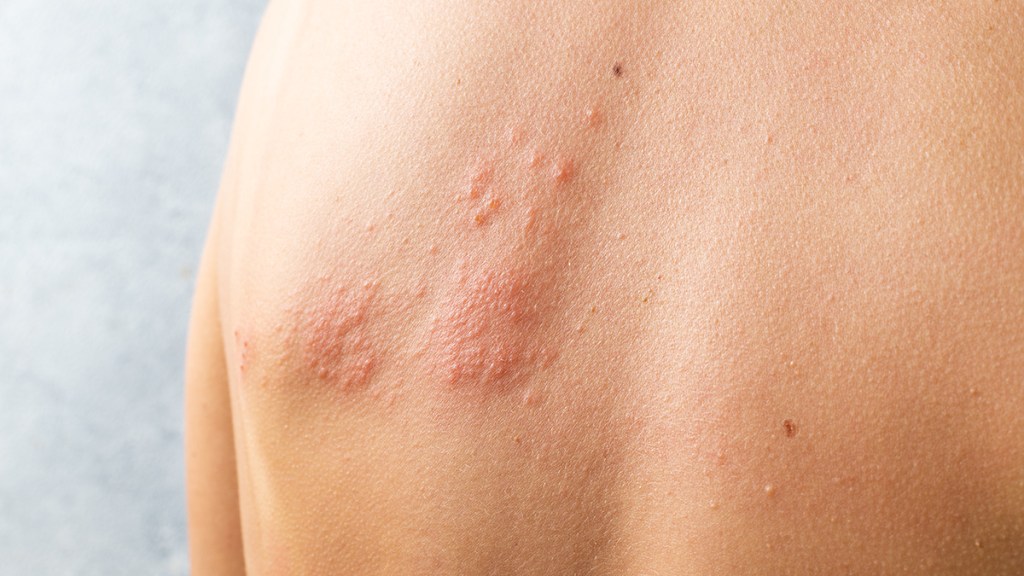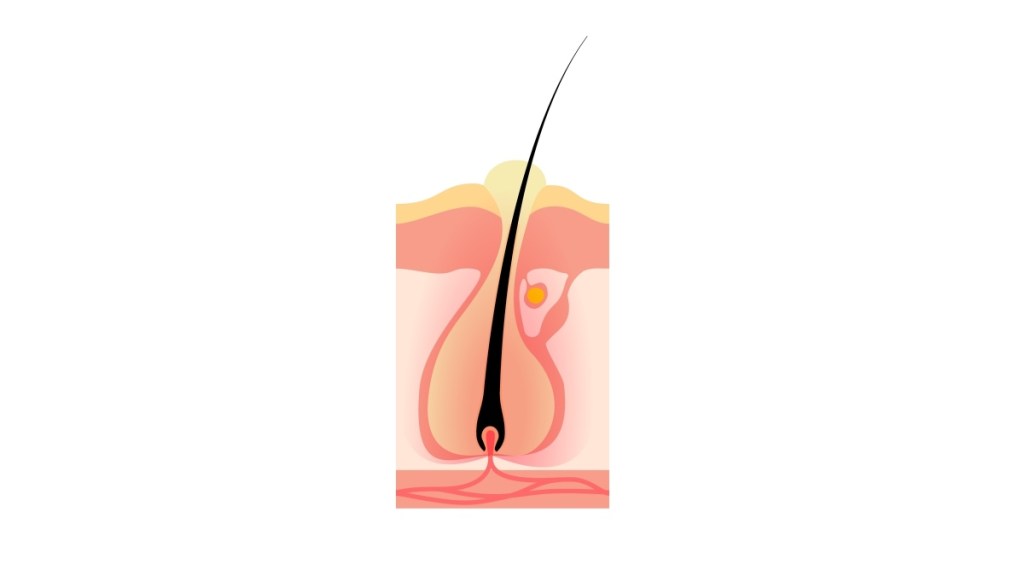Is That Bump on Your Vaginal Lips Harmless? A Gynecologist Reveals How To Spot a Boil — And What To Do If You Find One
If you don't clear them up, they can spread to other body parts — and other people!

Whenever you find something out of the ordinary below the belt, it’s normal to be alarmed. But, if the red, painful lump you discovered is a vaginal boil, you can probably relax. Vaginal boils aren’t a symptom of cancer or a sexually transmitted disease. In fact, these benign bumps are just hair follicles or small cuts that got infected. And with a little home treatment, they usually disappear on their own.
However, a vaginal boil shouldn’t be ignored. Just like with any infection, there’s a chance it could worsen. Plus, without proper precautions, you can accidentally spread it to other parts of your body or to someone else.
Here, we break down how to find out if that bump in your groin is a vaginal boil — and share the dermatologist-approved ways to treat it at home.
What is a vaginal boil?
A vaginal boil (also known as a skin abscess or furuncle) is an infection in the skin in the genital area. It often starts off as a small bump, then grows bigger, turns red and gets inflamed. “As the boil worsens, it becomes more painful with a yellow pus-filled center,” says women’s sexual health expert Sherry Ross, MD, author of She-ology: The Definitive Guide to Women’s Intimate Health. Period. (Buy from Amazon.com, $16.99) “Ultimately, it can ooze out, crust over, or rupture.”

Where do vaginal boils develop?
Even though they’re referred to as ‘vaginal’ boils, these abscesses actually grow on the skin outside the vagina. So, you’ll find them on the labia (lips of the vagina), in the pubic region (where pubic hair grows) or in the vulvar area around your vagina. You may also find them in the skin folds of the groin. But, they don’t actually develop inside the vagina.
“The vagina is the inner canal that leads toward the cervix and uterus,” explains board-certified gynecologist Suzanne Gilberg-Lenz, MD, author of Menopause Bootcamp (Buy from Amazon.com, $16.48) “If a pimple-like tender bump appears inside the vagina, it may be an impacted or infected local gland, such as the Bartholin’s, that normally produces secretions.”
How vaginal boils differ from other growths
“It can be challenging to know the difference between a vaginal pimple, sebaceous cyst, or vulva boil,” says Dr. Ross. But, if you grab a mirror and take a close look, there are clues.

Boils are painful red, swollen bumps that can range in size from a cherry pit to a walnut. Some can get even as large as a golf ball. The bigger they grow, the more discomfort you’ll likely experience. “A cyst and pimple of the vulva are not typically as painful, swollen, red, or as large as a boil,” Dr. Ross explains.
Have two or more red, swollen, painful bumps clustered together? They can still be vaginal boils. That’s because boils can develop in groups, causing a connected area of infection under your skin, which is called a carbuncle.
With herpes simplex virus (HSV), a viral sexual transmitted infection (STI), you’d look for other signs. “Symptoms include tingling or itching sensations in the area where painful, small, cluster blisters open and develop into ulcerations,” explains Dr. Ross. “Unlike boils, herpes blisters are a STI, more widespread, ulcerative and reoccur. Stress, fever, colds, illness, sunburn and even a period can trigger a herpes outbreak, but cannot cause a boil.”

Are you seeing black spots on your vaginal lips? Click through to our sister publication’s story Should You Be Worried About Dark Spots on Your Vagina?
What causes vaginal boils?
“Boils usually develop when bacteria collect around the hair follicles on the vulva,” says integrative gynecologist Tara Scott, MD, Medical Director of Revitalize Medical Group/Forum Health Akron. “A lump forms and it fills with pus, causing swelling and inflammation.”
Typically, the culprit infecting the hair follicle is the bacteria Staphylococcus aureus (commonly referred to as “staph”). A vaginal boil can also develop from a cut or abrasion in the skin, for example, while shaving or from an injury to that area. Staph bacteria will enter the wound through the skin and cause an infection that spurs a boil.

Can they spread to other parts of the body or other people?
Vaginal boils themselves are not contagious. “But the bacteria that causes the infection can spread to other parts of the body and to other people if proper hygiene is not practiced,” Dr. Ross cautions.
“Touching the boil with your hands can pass the bacterial infection to other parts of the body or to someone else,” she says. “Keeping the affected area clean, washing hands with soap and warm water, and not sharing towels should be followed to prevent spreading the infection.”
What makes you more prone to developing vaginal boils?
Any woman can develop a boil in her genital area. However, some women are more likely to develop them than others. These include women who:
- Are older
- Have diabetes
- Have a weakened immune system (including those with neutrophil disoders)
- Are obese
- Live in hot, humid climates
- Have eczema
Because vaginal boils can happen due to a break in the skin, shaving and waxing may also raise your risk.
Can they clear on their own?
“Boils can clear on their own, but it depends on their severity,” Dr. Ross states. “A small boil can improve within 7 to 14 days without medical intervention.”
As part of the recovery process, the boil reaches a point where it ruptures by itself, which releases the pus. Sometimes, the fluid doesn’t come out, but instead gets broken down inside the abscess. Unfortunately, not all vaginal boils will disappear by themselves. “Symptomatic and persistent boils require medical treatment to allow proper healing,” notes Dr. Ross.
The best way to treat vaginal boils at home
According to the American Academy of Dermatology, you can reduce pain and support the healing of a vaginal boil by applying heat with a warm compress. Simply soak a clean washcloth in hot water (being careful to avoid high temperatures that can cause burns). Hold the compress to the affected area for 10 to 15 minutes, 3 to 4 times daily, until the boil releases pus and heals. If the pain or swelling of your boil worsens, another boil appears, or you develop a fever or other symptoms, contact your doctor.
Resist the urge to pop it!
Most vaginal boils will eventually erupt on their own and the pus be released. Or, the fluid will be absorbed by the body and the swelling will go down. But there’s one thing you should never do with a vaginal boil as its healing: Don’t try to drain the fluid yourself by popping it.
“Unfortunately, many people will attempt to ‘squeeze’ the affected area to move treatment along,” Dr. Ross explains. “Attempting to squeeze a boil is the worst thing you can do since it will inflame and aggravate this bacterial infection.”
The result is that you’ll experience more pain and prolong the healing time. Worse yet, opening a boil yourself by squeezing or cutting it might spread the staph bacteria in your body along the blood or lymph vessels. A sign of this kind of complication to look for are red streaks leading away from the boil. Lymph nodes near your groin could also become inflamed and tender.
When should you see a doctor?
Vaginal boils are a common condition, but most clear up on their own. In fact, only about 3 in 100 patients who visit a doctor about a skin infection are seeking help for a boil anywhere on their body. But, though rare, boils can become serious and require medical intervention. Here are some signs to look for to know it’s time to visit your doctor:
- Your vaginal boil isn’t going away within 2 weeks
- Your vaginal boil grows larger and more painful, impacting everyday activities
- Your vaginal boil doesn’t appear any smaller or feel less painful after several days of at-home treatment
- You develop more than one vaginal boil
- Your vaginal boil goes away, then returns
- You develop a fever
- Your lymph nodes become swollen and tender
- You notice red streaks branching out from your vaginal boil
If you have diabetes or a weakened immune system for any reason and develop a vaginal boil, it’s also wise to tell your healthcare provider.
How doctors diagnose vaginal boils
Your doctor will start out by examining the vaginal boil and asking you to describe your symptoms. Your healthcare provider may also swab the pus from your vaginal boil so it can be tested in a laboratory to confirm what kind of bacteria are causing the infection. This way, if your doctor determines that you need antibiotics, she or he will know which are likely to be most effective.
If you have a high risk of complications or your boils are a recurrent problem, your doctor may also request blood tests. This helps determine if the infection has spread or if you have a medical condition that increases your risk of boils returning.
Easy ways to reduce your risk of a future flare up
Some risk factors for vaginal boils can’t be avoided, like health conditions that leave you immunocompromised. However, there are ways to reduce your chances of developing a vaginal boil that you can control. These include:
- Cleaning your genital area with antibacterial soap to decrease the build-up of boil-causing bacteria
- Replacing razors frequently
- Changing your underwear and leggings after exercising and when sweating on hot, humid days
- Considering losing excess weight so that bacteria can’t lurk in skin folds
- Avoiding shared soap, washcloths, towels or other items that touch your genital area
This content is not a substitute for professional medical advice or diagnosis. Always consult your physician before pursuing any treatment plan.













